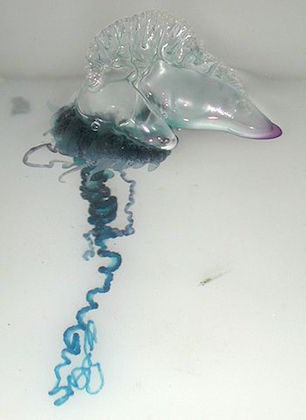421116-siphonosphores.jpg

Portuguese man o’ war. Credit: National Oceanic and Atmospheric Administration
Imagine skimming across the waves in a long, skinny boat with a few hundred siblings. Some of them paddle, some steer, some throw fishing lines in the water, and the lucky ones get to eat. That’s the life of a siphonophore, an organism that consists of a bunch of smaller organisms all working together as a single colony — and all of them descended from the same egg.
There are many species of siphonophore. The best known is the Portuguese man o’ war. It has a float, like a jellyfish, with lots of nasty stingers dangling below it. But many other species are long and skinny, and they travel through the ocean depths. They can be more than 130 feet long, but no thicker than a broomstick.
Such a creature begins with a single tiny organism, known as a zooid. It produces buds, which become their own organisms. But each one has a specialized role.
Some push the colony forward. Like jellyfish, they fill their bell-shaped bodies with water, then squirt it out to produce thrust. A recent study found that, in at least one species, the older, stronger swimmers are at the back of the colony and push it forward. Younger, weaker swimmers are at the front, and provide steering.
Other zooids catch prey — some by dangling feathery appendages that glow red. Stinging cells stun the prey and drag it up to the zooids that eat. The food then travels through a central digestive system that connects all the individual organisms — feeding an entire family that’s working together in the ocean depths.

